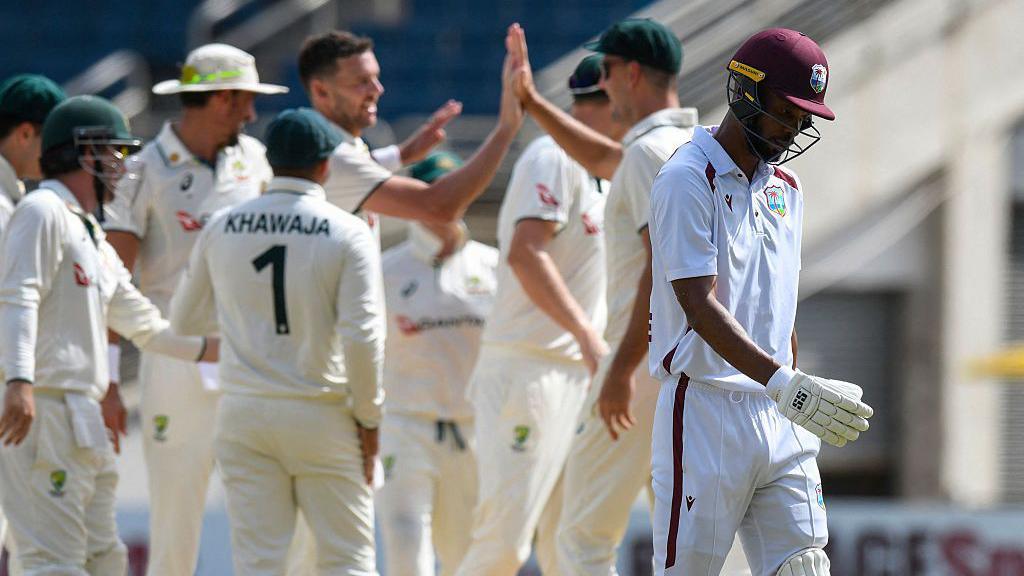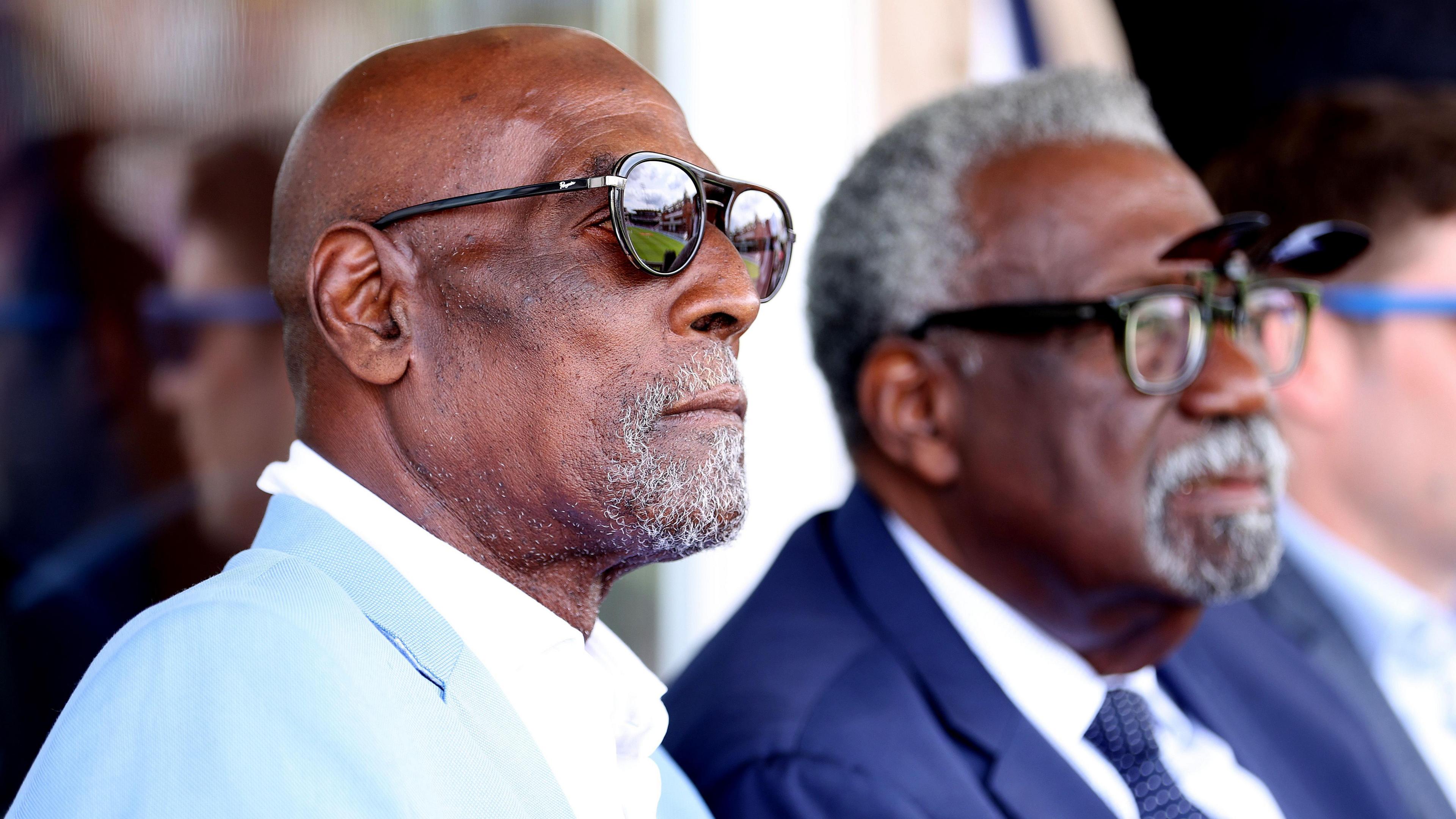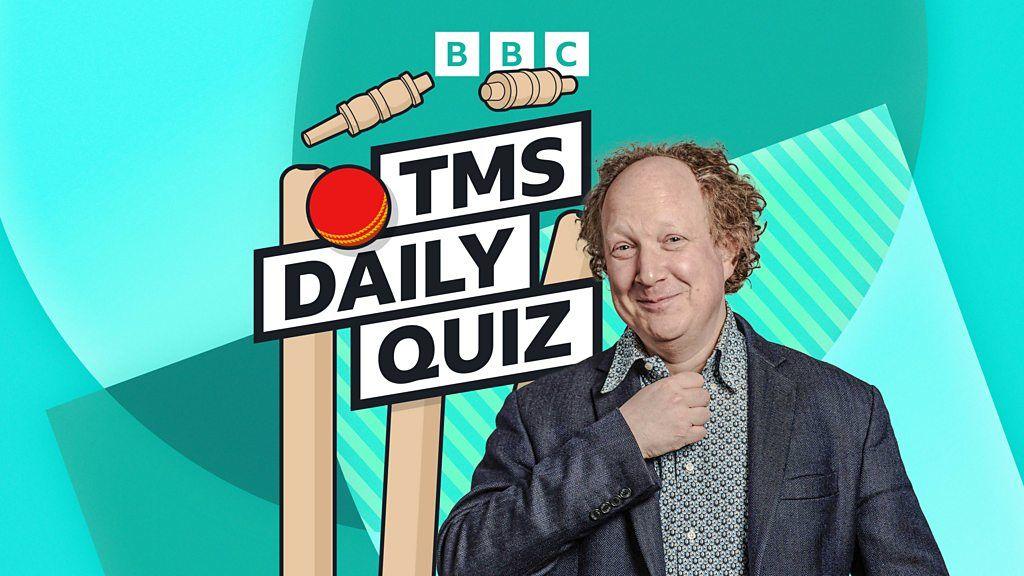'Gather the legends' - the numbers behind Windies' 27 all out as fallout begins

Roston Chase (right) was one of seven West Indies batters to be out for a duck
- Published
West Indies wrote an unwanted new chapter in the history books when they crumbled to just 27 all out against Australia on Monday - the second lowest score in Test history.
The extraordinary innings has prompted a top-level review of West Indies cricket - and it has thrown up several memorable statistics, good and bad.
BBC Sport has looked at the numbers to see how they compare across 148 years of Test cricket history.
What does it say about West Indies cricket?
Like any Test match there were a number of factors at play.
The pitch certainly favoured the bowlers, with Australia's first innings 225 the highest total of the match before the tourists were bowled out for just 121 in their second innings.
Then there is the quality of the opposition. Australia are the number one ranked Test team in the world while West Indies are eighth out of 12.
The tourists, who host England in the Ashes this winter, won their matches in the three-Test series by 159, 133 and 176 runs respectively.
Mitchell Starc, one of the best fast bowlers of this generation, bowled a fearsome opening spell that demolished the West Indies' top order in Jamaica on Monday.
"Out of nowhere," said Australia captain Pat Cummins, Starc can "tear an opposition apart and win a game for you."
Left-armer Starc was also armed with a pink ball since the third Test was a day-night game. Starc has taken 81 wickets in day-night cricket, far ahead of the next best, his Australia team-mate Cummins who has 43.
The pink ball has similar characteristics to one-day cricket's white ball in that some believe it swings more, certainly in the right conditions. Of bowlers to have taken more than 200 wickets in one-day internationals, only India's Mohammed Shami (25.8) has a better strike-rate (average balls bowled per wicket) than Starc's frankly incredible 26.6.
Australia were also helped by some pretty sloppy shots as the batting line-up disintegrated. Of those who played, opener John Campbell was the highest-ranked player in the world Test batting rankings at 78. Australia have four in the current top 20: Steve Smith, Travis Head, Alex Carey and Usman Khawaja.
"Assessing this series is simple: the bowlers kept us in the contest and the batting let us down time after time," was captain Roston Chase's frank assessment.
It is further evidence of the decline of West Indies cricket since its 1970s and 1980s heyday.
Of the 87 Test series they have played since 2000, West Indies have won just 23, with 15 of those coming against three weaker Test-playing nations in Bangladesh, Zimbabwe and Afghanistan.
Three of their five lowest innings totals have occurred in the 21st Century, with another in 1999.
That said, they did claim a credible draw in a two-Test series in Australia in 2024, proving they do have the quality to compete with the best on their day. They were also without some of their more established players such as Jason Holder, Kemar Roach and Gudakesh Motie.
Gather the legends - how Windies have reacted
West Indies' decline is nothing new, but this feels like a particular nadir and already the post-mortem has begun.
Less than 24 hours after the batting humiliation, Cricket West Indies president Dr Kishore Shallow called an emergency meeting to review the series and the final match in particular.
And the review is going to be packed with the biggest of big hitters: Sir Viv Richards, Sir Clive Lloyd and Brian Lara - "our greatest batsmen ever" according to Dr Shallow - have been invited to attend.
They will join fellow West Indies batting greats Shivnarine Chanderpaul and Desmond Haynes, and former fast bowler Ian Bradshaw, who already serve on the cricket strategy and officiating committee.
"This engagement is not ceremonial," a statement from Dr Shallow read. "These are men who helped define our golden eras, and their perspectives will be invaluable as we shape the next phase of our cricket development.
"We intend for this gathering to result in tangible, actionable recommendations."
Shallow insisted the team is in "a rebuilding phase" and investment is being made to reignite the "spirit that has long made West Indies cricket a force in the world".
He added: "Progress is rarely straightforward. It takes time, perseverance and belief, especially in our most difficult moments.
"There is much work to be done. But we must do it with purpose, and we must do it together."
How does 27 all out compare to other batting lows?
West Indies have shot straight into number two on the lowest scores list, and just one run short of the lowest score mustered by New Zealand against England in Auckland in 1955.
Such a low score is incredibly rare in the modern game.
Those are the only two totals in the top five that occurred after the Second World War, with one in 1924 and the other two in the 19th century.
The 14.3 overs West Indies batted is the third-shortest all out innings in Test history after Sri Lanka's 13.5 in 2024, when they slumped to 42 all out against South Africa (13th on the all-time lowest list, in case you were wondering), and the Proteas' 12.3 overs against England in 1924.
What were the best bowling figures?
Such paltry totals have resulted in some stunning bowling figures.
Starc ripped through the West Indies' top order as he finished with figures of 6-9 from 7.3 overs - four of those being maidens.
In 1955, England's Bob Appleyard took 4-7 in New Zealand's record low 26, ably supported by Brian Statham's 3-9, Frank Tyson's 2-10 and Johnny Wardle's 1-0.
The best figures in the top five belong to England's George Lohmann, who took an incredible 8-7 as South Africa were skittled out for 30 in 1896.
However, that only ranks 21st in the list of all-time best innings bowling figures, with Jim Laker's 10-53 for England against Australia in 1953 top of the pile.
Who was top scorer?
Justin Greaves was West Indies' top scorer with just 11, the only player to reach double figures
Greaves is one of just five players to reach double figures across the 55 who batted in the top-five lowest innings - none scoring more than 11.
It is notable that one of the four columns of those reaching double figures is occupied not by a batter, but by 'extras', with no-balls and wides contributing heavily to the low scores.
The 11 extras for South Africa against England in 1924 was their top scorer, with opener Herbie Taylor next with just seven.
Related topics
- Published15 July

- Attribution

- Published16 August
